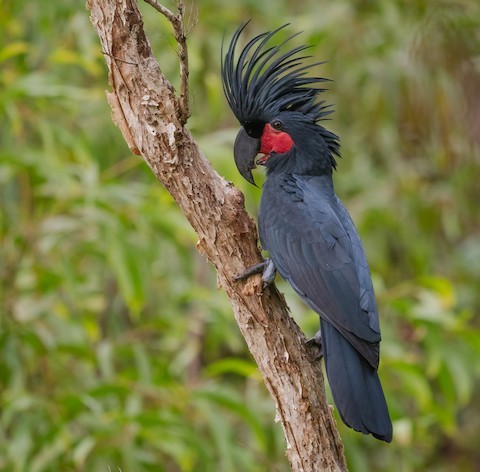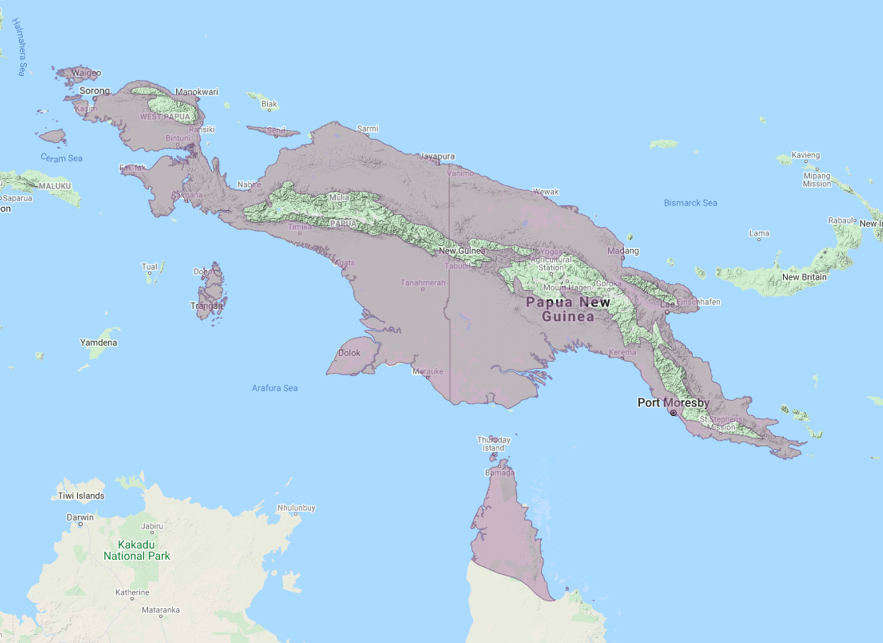Birdfinding.info ⇒ The magnificent Palm Cockatoo is uncommon and declining overall, but still locally common in several parts of its range. In Australia, it is most readily found in Iron Range National Park and the Northern Cape York Peninsula Area at Seisia and along Pajinka Road. In Papua New Guinea, it remains widespread across the southwestern lowlands, and can generally be found on excursions to the Fly River area. In Indonesia, it is seen most often in West Papua around Sarong and on Waigeo Island around Sapokreng.
Palm Cockatoo
Probosciger aterrimus
New Guinea, northern Queensland, and adjacent islands, where it occurs in woodlands, including intact forests and mixed agricultural areas, in lowlands and foothills up to around 1,350 m elevation.
Widely distributed throughout the lowlands of New Guinea and a few of its satellite islands: with substantial populations on Waigeo, Misool, and the Aru Islands.
In Queensland, confined to the Cape York Peninsula, south to around Archer River in the west, Mungkan Kandju National Park in the interior, and Stewart River in the east.
Identification
Unique and unmistakable: a very large, robust, glossy-black cockatoo with a huge bill, unfeathered red cheeks, and a shaggy, long, luxuriant crest.

Palm Cockatoo. (Seisia, Queensland, Australia; June 25, 2015.) © Gary W. Wilson
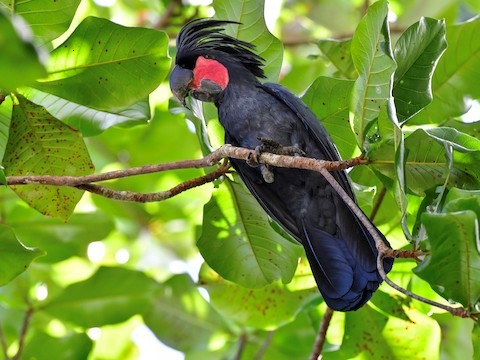
Palm Cockatoo. (Papua Barat, Indonesia.) © Arco Huang

Palm Cockatoo. (Quintell Beach, Iron Range National Park, Queensland, Australia; January 10, 2021.) © Laurie Ross
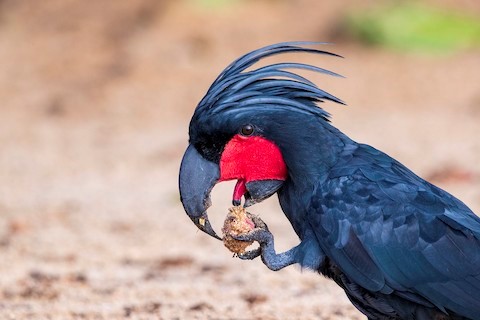
Palm Cockatoo. (Lloyd Bay, Iron Range National Park, Queensland, Australia; January 12, 2021.) © Laurie Ross
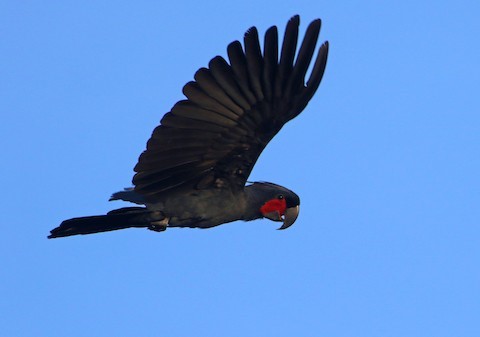
Palm Cockatoo. (Chili Beach, Iron Range National Park, Queensland, Australia; January 2, 2020.) © Julie Sarna
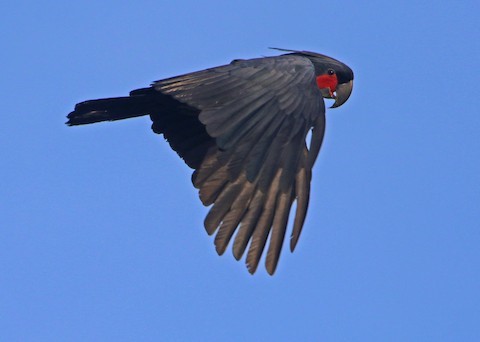
Palm Cockatoo. (Chili Beach, Iron Range National Park, Queensland, Australia; January 2, 2020.) © Julie Sarna
Notes
Polytypic species consisting of four recognized subspecies.
References
BirdLife International. 2016. Probosciger aterrimus. The IUCN Red List of Threatened Species 2016: e.T22684723A93043662. https://dx.doi.org/10.2305/IUCN.UK.2016-3.RLTS.T22684723A93043662.en. (Accessed September 4, 2021.)
eBird. 2021. eBird: An online database of bird distribution and abundance. Cornell Lab of Ornithology, Ithaca, N.Y. http://www.ebird.org. (Accessed September 4, 2021.)
Forshaw, J.M. 2010. Parrots of the World. Princeton University Press.
Juniper, T., and M. Parr. 1998. Parrots: A Guide to Parrots of the World. Yale University Press.
Michigan State University. 2021. AVoCet: Avian Vocalizations Center. https://avocet.integrativebiology.natsci.msu.edu/. (Accessed September 4, 2021.)
Pyle, R.L., and P. Pyle. 2017. The Birds of the Hawaiian Islands: Occurrence, History, Distribution, and Status. Version 2 (January 1, 2017). http://hbs.bishopmuseum.org/birds/rlp-monograph/. B.P. Bishop Museum, Honolulu, Hawaii.
Xeno-Canto. 2021. Palm Cockatoo – Probosciger aterrimus. https://www.xeno-canto.org/species/Probosciger-aterrimus. (Accessed September 4, 2021.)
